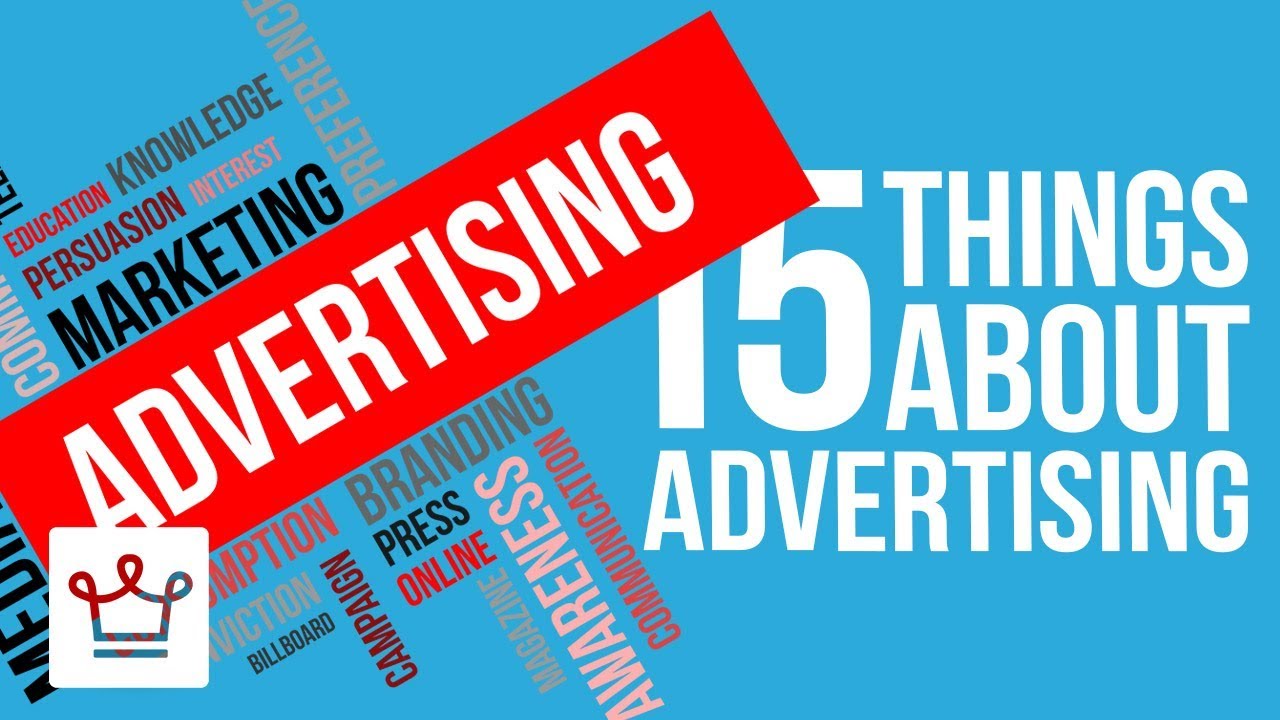In a world where screens illuminate every corner of our lives, theadvertisingindustry has undergone a monumental transformation. Thedigital revolution has bestowed upon us an era where traditional marketing strategies have taken a backseat in favor of the endless possibilities afforded by the internet.
Step into the arena of enticing headlines and eye-catching images, where consumer attention is the ultimate currency. With predictions of digital advertising dominance on the horizon, the battle for advertising supremacy has never been more fierce.
Join us as we delve into the captivating world of an industry on the cusp of a technological renaissance.
Table of Contents
- advertising industry
- Digital Advertising To Dominate Total Ad Expenditure By 2024
- US Expected To Lead In Ad Spend By 2024
- TV Ad Revenues Surpass 2019 Levels In 2022
- Radio Ad Spend Still Recovering From The Pandemic
- Out-Of-Home Advertising Stages A Comeback With Digital Growth
- Internet Advertising Remains Top Choice For Advertisers
- Global Digital Ad Spend To Rise Over 10% In 2023
- Digital Ad Spend To Exceed 835 Billion Dollars By 2026
- Mobile Ad Expenditure To Exceed 360 Billion Dollars In 2023
- Mobile Ads To Account For Over Half Of Ad Revenues
advertisingindustry
The advertising industry is evolving rapidly, with digital advertising projected to dominate total ad expenditure by 2024. The US is expected to be the largest economy in terms of ad spend by that year.
While TV ad revenues have already surpassed 2019 levels in 2022, radio ad expenditure has not fully recovered from the pandemic. However, out-of-home advertising is making a comeback, with projected growth in digital out-of-home media revenue.
Internet advertising remains the most attractive medium for advertisers, and global digital ad spend is expected to increase by over 10% in 2023, exceeding $835 billion by 2026. Additionally, mobile ad expenditure will account for over half of the revenues, reaching $360 billion in 2023.
Overall, the advertising industry is experiencing significant shifts and opportunities in the digital realm.
Key Points:
- Digital advertising is projected to dominate total ad expenditure by 2024.
- The US is expected to have the largest economy in terms of ad spend by 2024.
- TV ad revenues have surpassed 2019 levels in 2022, while radio ad expenditure has not fully recovered from the pandemic.
- Out-of-home advertising is making a comeback, with projected growth in digital out-of-home media revenue.
- Internet advertising remains the most attractive medium for advertisers, with global digital ad spend expected to increase by over 10% in 2023.
- Mobile ad expenditure will account for over half of the revenues, reaching $360 billion in 2023.
Sources
https://en.wikipedia.org/wiki/Advertising_industry
https://www.statista.com/topics/990/global-advertising-market/
https://www.forbes.com/sites/forbesbusinessdevelopmentcouncil/2021/12/13/looking-toward-the-future-of-advertising/
https://www.britannica.com/money/topic/advertising
Check this out:
💡 Pro Tips:
1. Native advertising is gaining popularity in the advertising industry as it seamlessly blends with the content and provides a more organic user experience.
2. As ad-blocking technology becomes more prevalent, advertisers are focusing on creating non-intrusive and engaging ads that provide value to the audience.
3. Influencer marketing is on the rise, with brands leveraging the power of social media influencers to reach their target audience and increase brand awareness.
4. Programmatic advertising is being widely adopted, allowing advertisers to automate their ad buying process and target specific audience segments more effectively.
5. The use of augmented reality (AR) and virtual reality (VR) in advertising is growing, providing immersive and interactive experiences for consumers, leading to increased engagement and recall.
Digital Advertising To Dominate Total Ad Expenditure By 2024
In recent years, digital advertising has been on the rise, and this trend is expected to continue. According to projections, digital advertising is set to dominate total ad expenditure by 2024.
This shift can be attributed to the increasing use of digital platforms and the growing number of consumers who prefer online shopping and entertainment. The convenience and accessibility of digital advertising make it an attractive option for businesses looking to reach a wider audience.
One of the main reasons for the rise of digital advertising is the ability to target specific demographics and track the effectiveness of campaigns. With advanced analytics, advertisers can now collect data on consumer behavior and preferences, enabling them to tailor their ads to specific audiences.
This level of precision and customization has made digital advertising a highly lucrative option for businesses of all sizes.
US Expected To Lead In Ad Spend By 2024
As the largest economy in the world, it comes as no surprise that the United States is projected to be the leader in ad spend by 2024. With a robust consumer market and a highly competitive advertising industry, the US offers a wealth of opportunities for businesses looking to promote their products or services.
In addition, the US has a strong digital infrastructure, which has paved the way for the growth of digital advertising.
The US market’s dominance can also be attributed to the large number of tech companies and social media platforms based in the country. These platforms have become major players in the advertising industry, offering businesses innovative ways to reach their target audience.
With the increasing popularity of online platforms, traditional advertising channels are slowly losing their relevance, and businesses are shifting their focus and budget towards digital advertising.
TV Ad Revenues Surpass 2019 Levels In 2022
Despite the rise of digital advertising, television still holds a significant share of the advertising industry. In a surprising turn of events, TV ad revenues have already surpassed 2019 levels in 2022.
This comeback can be attributed to the return of live sports events and the resumption of television production after the pandemic-induced hiatus.
Television remains an influential medium for advertisers due to its ability to reach a wide and diverse audience. It continues to be a popular choice for brands looking to create impactful and memorable ads.
Furthermore, the emergence of streaming platforms has opened up new advertising opportunities, allowing businesses to engage with viewers through targeted ads and sponsored content.
Radio Ad Spend Still Recovering From The Pandemic
While TV ad revenues have bounced back, the same cannot be said for radio ad expenditure. The impact of the pandemic has hit the radio industry hard, leading to a slower recovery when compared to other advertising mediums.
The decrease in commuting and changes in daily routines have resulted in a decline in radio listenership, affecting ad revenues.
However, it is important to note that radio advertising still holds value, particularly in niche markets and local communities. Advertisers targeting specific demographics and regions can benefit from radio ads as they provide a personal and intimate connection with the audience.
As the world slowly recovers from the pandemic and daily routines return to normal, radio ad spend is expected to regain its momentum.
Out-Of-Home Advertising Stages A Comeback With Digital Growth
Out-of-home advertising, which includes billboards, signage, and transit ads, suffered a major blow during the pandemic as people stayed indoors and travel was restricted. However, with the gradual reopening of economies, out-of-home advertising is making a comeback, fueled by the growth of digital out-of-home (DOOH) media.
DOOH offers advertisers more dynamic and interactive options to engage with consumers. The integration of digital technologies in traditional out-of-home formats has opened up new creative possibilities, allowing advertisers to deliver targeted and personalized messages.
With advancements in geo-targeting and programmatic advertising, DOOH has become an attractive option for businesses looking to grab the attention of consumers on the move.
Internet Advertising Remains Top Choice For Advertisers
Despite the rise of various digital advertising channels, internet advertising remains the most attractive medium for advertisers. With the vast reach of the internet and the increasing amount of time people spend online, businesses have recognized the need to establish a strong online presence.
Internet advertising offers a wide range of options, including display ads, search engine marketing, social media advertising, and influencer marketing. These channels enable businesses to target specific audiences based on their interests, demographics, and online behavior.
Additionally, internet advertising provides real-time analytics and performance metrics, allowing advertisers to measure the success of their campaigns and make data-driven decisions.
Global Digital Ad Spend To Rise Over 10% In 2023
The global digital advertising market is poised for significant growth in the coming years. It is projected that digital ad spend will increase by over 10% in 2023, demonstrating the industry’s resilience and adaptability.
This growth can be attributed to the expanding online user base, especially in emerging markets, and the continuous innovation in digital advertising technologies.
Emerging technologies such as artificial intelligence, virtual reality, and augmented reality are revolutionizing the way advertisers engage with consumers. These technologies enable immersive and personalized advertising experiences, capturing the attention and interest of users.
As advertisers continue to explore new ways to captivate audiences, the digital ad spend is expected to accelerate further.
Digital Ad Spend To Exceed 835 Billion Dollars By 2026
With the continuous growth of digital advertising, the global digital ad spend is projected to exceed 835 billion dollars by 2026. This staggering figure highlights the immense opportunities and potential that the digital advertising industry offers.
As businesses increasingly allocate their budgets to digital platforms, traditional advertising channels will face greater challenges in attracting ad spend.
The shift towards digital advertising is driven by its effectiveness and efficiency in reaching target audiences. The ability to deliver personalized and relevant ads creates a higher chance of conversion and engagement.
As technology continues to evolve and consumer behavior evolves with it, digital ad spend is set to maintain its upward trajectory.
Mobile Ad Expenditure To Exceed 360 Billion Dollars In 2023
Mobile advertising has become a dominant force in the advertising industry, driven by the widespread use of smartphones and mobile devices. In 2023, mobile ad expenditure is estimated to exceed 360 billion dollars.
This highlights the importance of optimizing advertising campaigns for mobile platforms, ensuring seamless user experiences across various screen sizes.
The rise of mobile ads can be attributed to the increasing amount of time people spend on their smartphones and the popularity of mobile apps. Advertisers recognize the potential of reaching consumers on their most personal device, allowing them to connect with individuals on a more intimate level.
The growth of mobile ad spend further emphasizes the need for responsive and mobile-friendly advertising strategies.
Mobile Ads To Account For Over Half Of Ad Revenues
As mobile ad expenditure continues to soar, it is predicted that mobile ads will account for over half of total ad revenues. This shift indicates a major change in consumer behavior, with mobile devices becoming the primary platform for accessing information, entertainment, and making purchasing decisions.
The dominance of mobile ads can be attributed to their versatility and targeted reach. Advertisers have the ability to tailor ads based on user preferences, location, and demographics, creating highly relevant and engaging campaigns.
Furthermore, the integration of mobile ads with social media platforms and mobile apps provides advertisers with a seamless and immersive advertising experience.
In conclusion, the advertising industry is experiencing a significant transformation from traditional mediums to digital platforms. Digital advertising is set to dominate total ad expenditure by 2024, with the US projected to lead in ad spend.
TV ad revenues have already surpassed 2019 levels, while radio ad expenditure is still recovering from the pandemic. Out-of-home advertising is making a comeback through digital growth, and internet advertising remains the top choice for advertisers.
Global digital ad spend is expected to rise over 10% in 2023, with mobile ad expenditure exceeding 360 billion dollars. Mobile ads are predicted to account for over half of ad revenues, highlighting the growing importance of mobile platforms in advertising campaigns.
As the advertising industry continues to evolve, businesses must adapt their strategies to capitalize on the opportunities provided by digital advertising.












